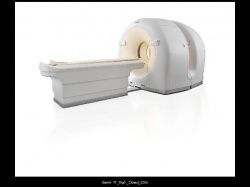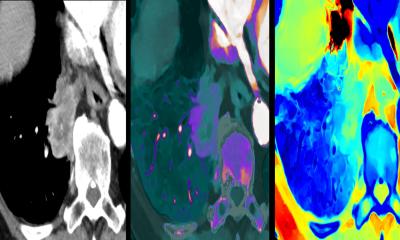Philips' Imaging Highlights at ECR 2010
At ECR 2010, Philips launches the GEMINI LXL, the newest PET/CT scanner, offering many of the features available on premium systems for those working in the clinical areas of both radiology and oncology. Also making its European debut is DoseAware, a new dose-saving solution for interventional procedures. Furthermore, Philips presents its new Sonalleve MR-HIFU Fibroid Therapy system, which offers a non-invasive alternative to the traditional surgical treatments for uterine fibroids in women.


New GEMINI LXL PET/CT scanner
The GEMINI LXL offers advanced applications and helps to optimize workflow and streamline operations. Featured in the GEMINI LXL are workflow improvements and the availability of a "One-Touch" couch motion enabler. Streamlined workflow is also included for cardiac scanning, from easier cardiac gating setup and data storage to a cardiac alignment application which simplifies the process of cardiac re-alignment. The GEMINI LXL features state of the art crystal and detector technology, optimized system sensitivity for clinical procedures, improved image quality with optimized reconstruction and image processing. It also enables improved accuracy with patient motion management due to its 4D PET/CT imaging capabilities.
Modern crystals and detector technology have been used for the GEMINI LXL, which significantly improves image quality and leads to a faster output of scans.
The GEMINI LXL PET/CT scanner will be released in the second quarter of 2010.
DoseWise Philosophy: Philips presents DoseAware
As healthcare guidelines continually shift, both care providers and patients have concerns about potential risks caused by high radiation dose. Knowing this, Philips has been leading the way in dose-saving technologies for many years. Its latest innovation is DoseAware.
At the European Congress of Radiology 2010 Philips showcases DoseAware, a system that allows for real time feedback to all of the people in the fluoroscopic suite. DoseAware allows the team members to make almost instantaneous improvements in order to minimize their respective X-ray dose during a procedure.
“DoseAware is one of the most important new tools available to help reduce unnecessary medical radiation exposure to physicians and staff. It's a much easier and practical way to monitor levels than conventional methods. Creating a safer work environment is not only the right thing to do, but our obligation.” states Jane Kiah, Director Cardiac and Vascular Services at Baptist Cardiac & Vascular Institute, Miami.
The invisible nature of radiation makes the real time assessment of radiation dose critical. DoseAware consists of wireless real time radiation badges, worn by all of the members of the team, and quantitatively displaying the scattered X-ray dose being absorbed by every member of the team. The base station hangs adjacent to the imaging monitors and displays the amount of dose being exposed to on the screen. This allows for instantaneous feedback by the operator to reduce X-ray dose, like using a shield, stepping back a few feet, or lowering the detector. They are all quantitatively demonstrated to the operators in the room during the procedure and serve as positive reinforcement. The fact that the operators can immediately review the effect of their actions, completes the feedback loop and helps to develop a healthy way of working. In the longer term DoseAware will allow for a more comprehensive evaluation utilizing the time stamped recorded X-ray dose information.
Non-invasive treatment of uterine fibroids with the sonalleve MR-HIFU
Ultrasound beams are focused onto the target volume inside the fibroid, and due to the significant energy deposition at the focus, temperature within the tissue rises to about 60 °C, ablating fibroid tissue. MRI is used for three-dimensional planning of the procedure, as well as real time temperature monitoring during the ablation and follow-up.
During the non-invasive MR-HIFU treatment the patient experiences almost no pain. She leaves the hospital the same day and most patients return to their normal daily activities within two days. The volumetric ablation with real-time feedback increases efficiency, enabling treatment times of about 2 hours, which makes Sonalleve MR-HIFU an attractive treatment option.
“Sonalleve MR-HIFU is a new technique putting only little stress on the patient. With this we found a good way to remove uterine fibroids in the future”, states Prof. Dr. med. Klaus Diedrich, Director of the Clinic for Obstetrics and Gynecology at the University Hospital Schleswig-Holstein in Lübeck, Germany.
Uterine fibroids are the most common non-cancerous tumors in women of childbearing age1. Having fibroids can be painful and cause heavy bleedings between periods. Up to three out of four women suffer from uterine fibroids at some point during their lives, although they are hardly aware of them, as they usually cause no symptoms and are discovered incidentally, for instance during pelvic exams. However, up to 20% of women with uterine fibroids experience severe symptoms that require treatment.
More information on ECR 2010 can be found at www.philips.com/ECR
You can also visit Philips Electronics at ECR 2010 at Booth 102 in Hall A and Booth 111 in the Conference Area at the Austria Centre in Vienna
05.03.2010











